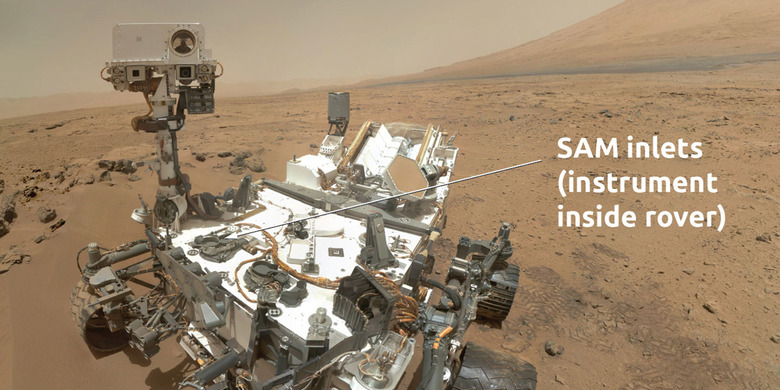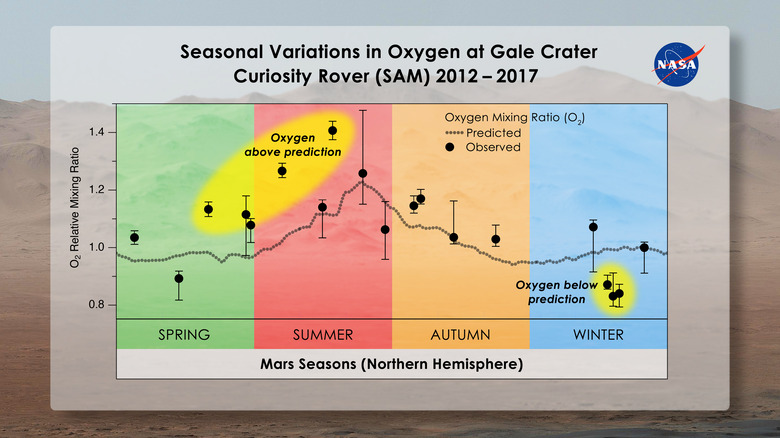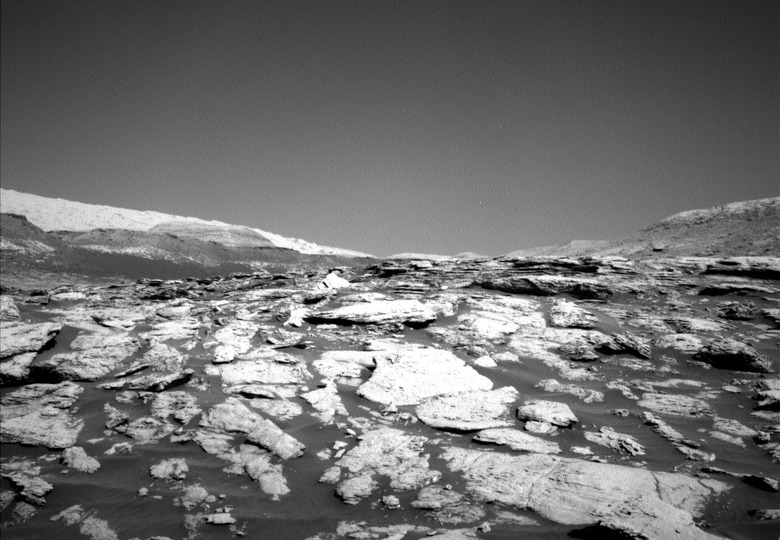Mars oxygen levels keep spiking and NASA still isn't sure why
Something is causing oxygen levels on Mars to spike, and despite the best efforts of the Curiosity rover and NASA's team sifting its data back down on Earth, right now scientists don't know what's causing it. Though it's commonly known that the red planet doesn't support human life in its current state, that doesn't mean there isn't any oxygen at all in its atmosphere.
In fact, 0.16-percent of the Martian atmosphere is molecular oxygen. The majority is carbon dioxide, at 95-percent, with 2.6-percent molecular nitrogen, 1.9-percent argon, and 0.06-percent carbon monoxide making up the rest.
Curiosity has been tracking the balance of gaseous molecules using a special tool, the Sample Analysis at Mars (SAM) instrument, since it landed on the planet six Earth years ago. That's given the rover – and the scientists crunching through its returned data – three Martian years-worth of seasonal changes to examine. What's now surprising them is just how much oxygen levels are fluctuating.

Like on Earth, there are air pressure changes on Mars that shift its atmosphere around. During the Martian winter, for example, carbon dioxide freezes over the planet's poles: that lowers the air pressure overall, as air redistributes to balance it out. That reverses during the spring and summer, when the carbon dioxide evaporates again.
What scientists expected to see during these shifts was a consistent and predictable change in proportions for each of the gases involved. While that held true for nitrogen and argon, though, relative to carbon dioxide levels, oxygen has proved to be an outlier.
Mysteriously, during spring and summer the levels of oxygen in the Martian air rises by up to 30-percent. During the fall, it then drops again to normal predicted levels.

"This pattern repeated each spring," NASA's Lonnie Shekhtman, of the Goddard Space Flight Center, says, "though the amount of oxygen added to the atmosphere varied, implying that something was producing it and then taking it away."
After checking the SAM for potential mis-readings, NASA's team tried to come up with potential theories for explaining the outsized shift. There's not enough water in the air for that to be breaking down and releasing oxygen, and carbon dioxide breaks down too slowly to generate the observed changes in levels. Similarly, solar radiation would act too slowly to break down oxygen into atoms and have it blown away into space.
Teasingly, the oxygen change is observed as working in tandem with seasonal changes in methane levels, and indeed scientists are theorizing that the two may be connected. "The fact that the oxygen behavior isn't perfectly repeatable every season makes us think that it's not an issue that has to do with atmospheric dynamics," Melissa Trainer, a planetary scientist at Goddard and lead on the new research, explains. "It has to be some chemical source and sink that we can't yet account for."

Exactly what that link might be, though, is uncertain. Biological activity would, of course, be one source of methane and oxygen, but there's still no "convincing evidence" of any biological activity on Mars, Shekhtman points out. Curiosity, meanwhile, lacks any specific instruments to figure out whether the gases are coming from biological or geological sources.
Without those tools, all the team can do is continue to measure the changes in levels and theorize on what might be causing them. The next NASA mission to Mars isn't expected until next year, when the new Mars 2020 rover will blast off to the red planet to join Curiosity in undertaking scientific exploration. There'll also be an ExoMars rover launched by the European Space Agency, while China plans a rover launch of its own in 2020 too.
